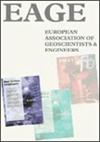整合地面地球物理方法,确定在役矿井内近地表含水层区的特征
IF 1.1
4区 地球科学
Q3 GEOCHEMISTRY & GEOPHYSICS
引用次数: 0
摘要
了解矿区的近地表地下水储量、流动模式、地表水和地下水之间的相互作用,有助于提高采矿效率和利润。这对于受水流影响的露天矿尤为重要,因为水流可能会对生产造成负面影响并增加开采成本。我们对位于南非布什维尔德复合区西南部的 Tharisa 矿业公司露天矿区的近地表含水层区域进行了测绘和特征描述。主要目的是推断矿区的矿坑水流入量,并确定如何更好地控制流入量。布什维尔德复合区拥有部分相连的非承压冲积层、浅风化层和结晶基岩含水层,这些含水层通常由小规模的渗透带相连。地震折射层析成像、多通道面波分析、电阻率层析成像和钻孔数据被用来绘制和了解矿区附近的不同含水层区域,并推断它们与矿坑进水的关系。地球物理勘测对覆盖层、风化基岩含水层区和结晶含水层岩石区的顶部进行了合理的测绘。勘测结果表明,矿坑附近的风化范围广、程度深,可能具有较高的导水性。这些结果有助于更好地了解矿山的近地表环境,可用于实施有效和有针对性的脱水技术,从而更好地控制矿坑流入水,改善矿山工作条件和生产。本文章由计算机程序翻译,如有差异,请以英文原文为准。
Integration of ground geophysical methods to characterize near‐surface aquifer zones within an active mine
Understanding near‐surface groundwater storage, flow patterns, surface and groundwater interactions in mining areas can assist in making mining more efficient and profitable. This is especially important in opencast mines affected by water inflows that may negatively affect production and increase mining costs. We map and characterize the near‐surface aquifer zones at the opencast site of Tharisa Minerals, located in the southwestern region of the Bushveld Complex (South Africa). The main goal is to infer pit water inflow at the mine site and determine how it may be better controlled. The Bushveld Complex hosts partially connected and unconfined alluvial, shallow‐weathered and crystalline bedrock aquifers, which are often connected by small‐scale permeable zones. Seismic refraction tomography, multichannel analysis of surface waves, electrical resistivity tomography and borehole data are used to map and understand the different aquifer zones in the vicinity of the mine, as well as infer their relation to water inflow in the mine pits. The geophysical surveys map the overburden, weathered bedrock aquifer zone, and the top of the crystalline aquifer rock zone reasonably well. They reveal extensive and deep weathering, and possible high hydraulic conductivity in the vicinity of the mine. The results provide a better understanding of the mine's near‐surface environment, which could be used to implement effective and targeted dewatering techniques, thus enabling better pit inflow water control to improve mine working conditions and production.
求助全文
通过发布文献求助,成功后即可免费获取论文全文。
去求助
来源期刊

Near Surface Geophysics
地学-地球化学与地球物理
CiteScore
3.60
自引率
12.50%
发文量
42
审稿时长
6-12 weeks
期刊介绍:
Near Surface Geophysics is an international journal for the publication of research and development in geophysics applied to near surface. It places emphasis on geological, hydrogeological, geotechnical, environmental, engineering, mining, archaeological, agricultural and other applications of geophysics as well as physical soil and rock properties. Geophysical and geoscientific case histories with innovative use of geophysical techniques are welcome, which may include improvements on instrumentation, measurements, data acquisition and processing, modelling, inversion, interpretation, project management and multidisciplinary use. The papers should also be understandable to those who use geophysical data but are not necessarily geophysicists.
 求助内容:
求助内容: 应助结果提醒方式:
应助结果提醒方式:


